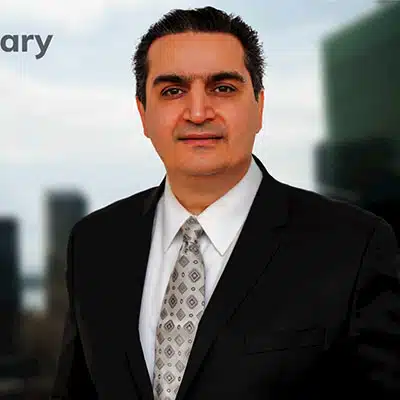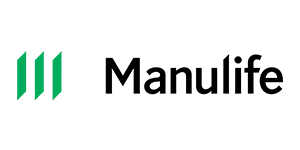A Health Spending Account (HSA) is a helpful addition to your employee benefits package. It allows you to set funds aside for employees to use for their healthcare needs. This money is tax-free for the employee receiving the funds, and it is tax-deductible for your company.
As good as a Health Spending Account sounds for both employees and employers, it doesn’t cover all medical expenses. The Canada Revenue Agency regulates Health Spending Accounts, and it decides which expenses qualify for reimbursement and which ones do not.
Before adding a Health Spending Account to your employee benefits package, it’s vital to understand the breadth of its coverage. That way, you can decide if it will be beneficial for your company and your employees.
Table of Contents
What Does a Health Spending Account in Canada Cover?
Expenses approved under a Health Spending Account payment include a wide variety of services. In addition to treatments, devices, and medications, eligible Health Spending Account expenses include copays, deductibles, and other out-of-pocket costs.
List of HSA Eligible Expenses
Here is a complete list of HSA eligible expenses, according to the Canada Revenue Agency.
Medications
Medications prescribed by a licensed medical practitioner or dentist are eligible expenses for a Health Spending Account, including:
- Insulin
- Oxygen
- Prescribed syringes
- Prescription drugs and medical preparations
Vision Coverage
The vast majority of health insurance policies do not cover eye care services—but an HSA will. Here are the eligible expenses for vision care:
- Prescription glasses
- Contacts
- Corrective laser eye surgery
Licensed Medical Practitioners
Medical doctors and dentists are not the only medical practitioners whose services are eligible for fund reimbursement. Additional eligible licensed medical practitioners include:
- Therapists (mental, occupational, and speech)
- Podiatrists
- Pharmacists
- Nurses
- Chiropractors
- Dietitians
- Acupuncturists
- Optometrists
- Osteopaths
- Psychoanalysts
- Psychologists
- Christian Science practitioners
Dental Care
As mentioned, the CRA allows dental care for Health Spending Account employee repayment. The specific eligible expenses are:
- Check-ups, cleaning, and other preventative services
- X-rays and other diagnostics
- Orthodontia
- Fillings, root canals, and other restorative services
Full-time Care
If any of your employees take part in the Health Spending Account program and require attendant care, these are the eligible expenses:
- Full-time attendant or nursing home care for certified medical conditions
- Certified medical conditions allowing for independent living with dependent care
Hospital Stays
Staying in the hospital can be expensive, even with health insurance. Having a Health Spending Account is helpful in these situations. According to the CRA, payments to the following facility types are eligible:
- Public or private hospitals
- Nursing home or other full-time care facilities
- Special institutions or schools for the mentally or physically impaired and their personnel, equipment, and facility
Medical Supplies and Equipment
All medical devices, supplies, and equipment must be medically necessary and prescribed by a licensed medical practitioner. Here is a list of the expenses a Health Spending Account covers:
- Artificial eyes, kidney machines, and limbs
- Crutches
- Hearing aids
- Colostomy and ileostomy pads
- Iron Lung and chest respirators
- Speaking aids
- Braces for limbs and spine
- Oxygen tents
- Incontinence products for a medical condition
- Rocking beds
- Hernia truss
- Wheelchairs
Prescribed Devices
The CRA recognizes that there are additional devices that may be medically necessary. That’s why they have a list of additional eligible devices. The only requirement is that the recipient must have a prescription from a licensed medical professional.
- Air conditioner up to $1,000 or 50 percent of the cost for chronic disorders
- Devices to help severe chronic immune system disorders and respiratory disorders
- Equipment necessary for mobility-impaired individuals to drive a vehicle
- Television equipment for the visually challenged
- Infant devices for those at risk for SIDS
- Elastic support hose
- Electronic environmental control systems
- Breast prosthesis
- Pacemakers and monitors
- Hospital beds with necessary attachments
- Osteogenesis stimulators
- Infusion pumps
- Mobility assisting devices
- Optical scanners
- Orthopedic shoes
- Power lifts
- Speech systems and Braille printers
- Teletypewriters
- Walkers
- Wigs
Diagnostics and Rehabilitation
To diagnose an issue accurately, medical personnel needs to learn the patient’s problem. A Health Spending Account covers the diagnostics necessary to confirm a patient’s diagnosis. These include radiology procedures, labs, and other necessary tests.
Similar to diagnostics, a sick patient may need rehabilitation services. Reasonable rehabilitation services fall under the Health Spending Account umbrella.
Travel Expenses
At times, employees may have to travel for medical services. Eligible travel expenses include:
- Ambulance services to and from the hospital
- Transfers from one hospital to another of at least 40 kilometres
- Meals and accommodations for a patient and a necessary accompanying person, if travelling over 80 kilometres for medical services
Miscellaneous Medical Care
Some expenses don’t fall into any particular category, yet Health Spending Accounts still cover them. These expenses include:
- Service animal acquisition, maintenance, and care
- Home modifications for medical conditions
- Transplant donor expenses for donation, travel, accommodations, meals, and hospital stays
Extended Health Care
Although a Health Spending Account is useful for employees to cover expenses that fall outside of their healthcare plan, the funds are limited. An extended health care benefit covers costs that your employees’ health plan doesn’t cover.
If you think your employees could benefit from extended healthcare coverage, get in touch with our team at Group Enroll. We’ll help you find the best provider for your needs.
Your Guide to Health Spending Account for Small Businesses in Canada
With Health Spending Account to your small business’s benefits package not only helps attract employees but also helps your business. Read more guide here
Explore a Health Spending Account for Your Canadian Business
Medical expenses change as treatment and technology changes. If you or your employees have questions about what your Health Spending Account in Canada covers, check with the Canada Revenue Agency. They keep an up-to-date list of all eligible expenses for the Health Spending Account program.
If possible, check expenses before you incur them. Doing so will save you time, aggravation, and money after your treatment.








